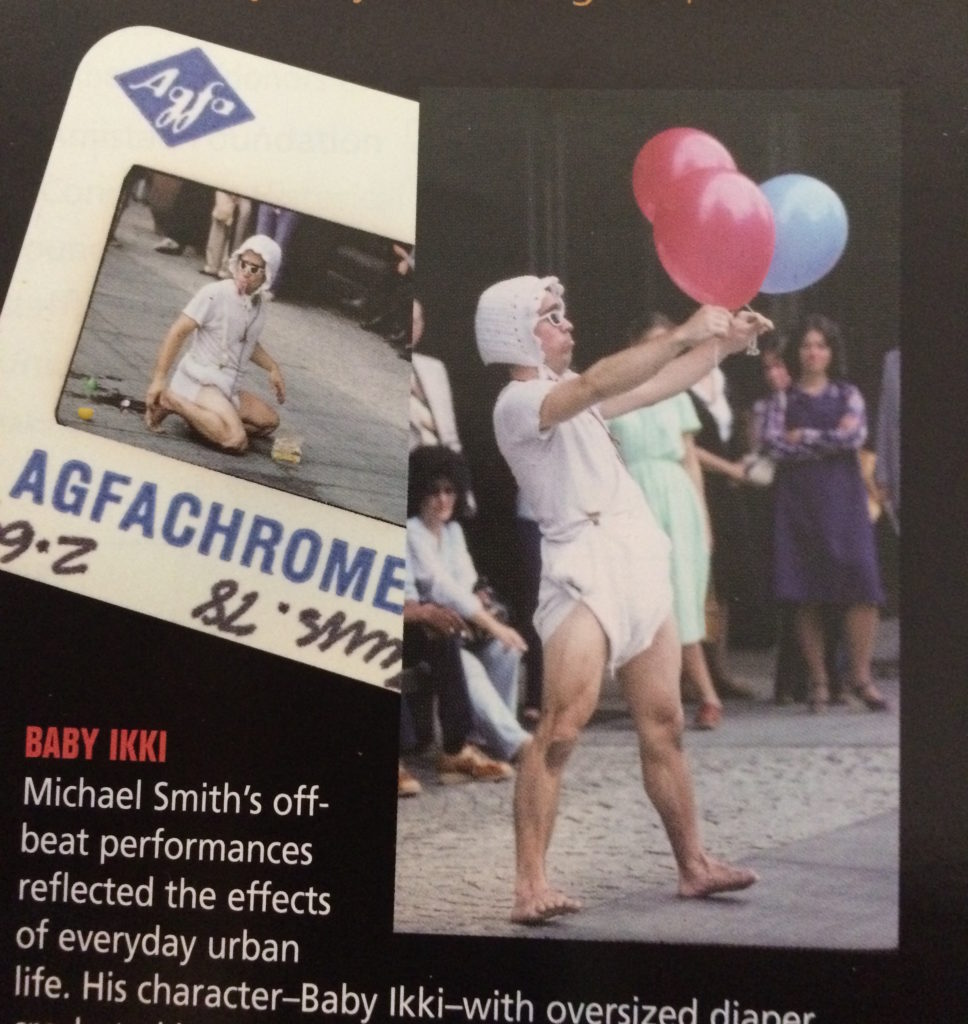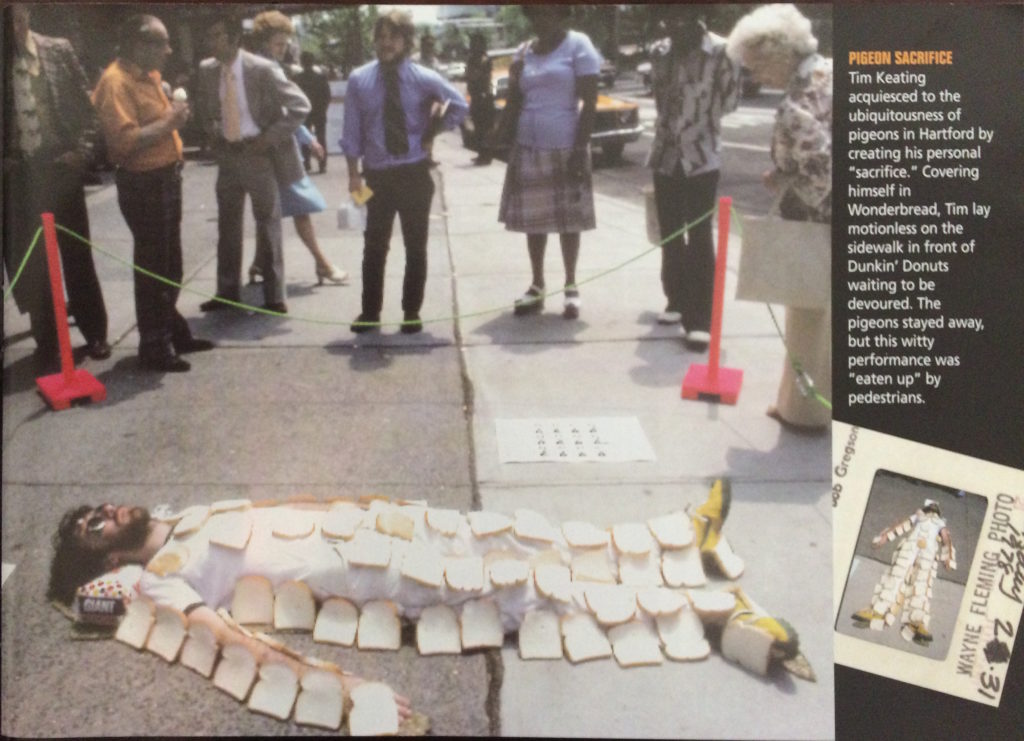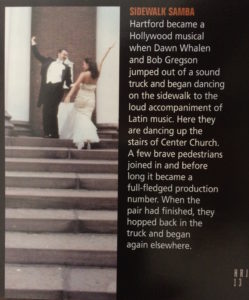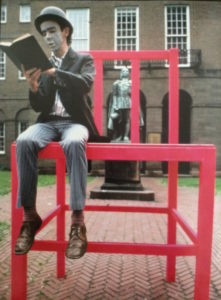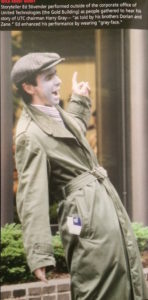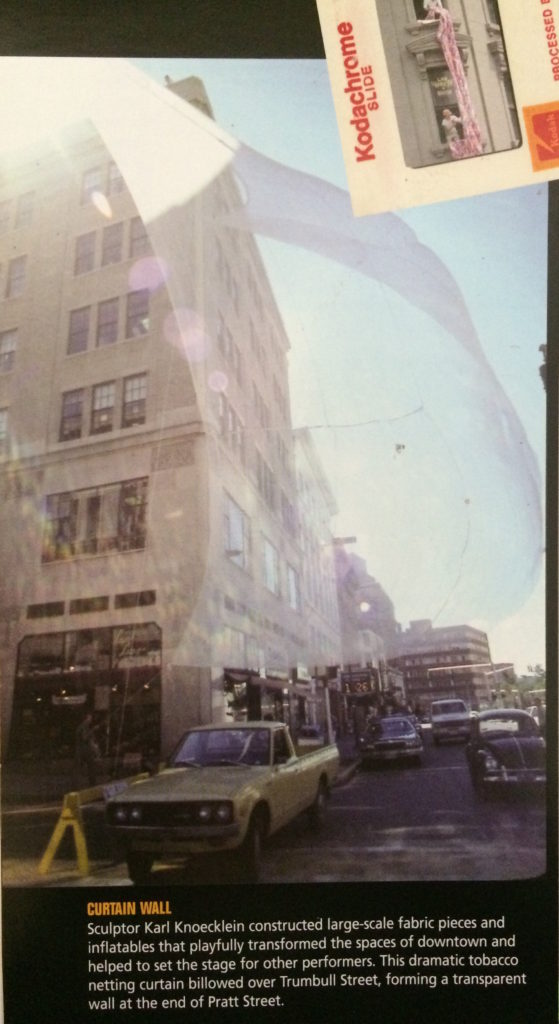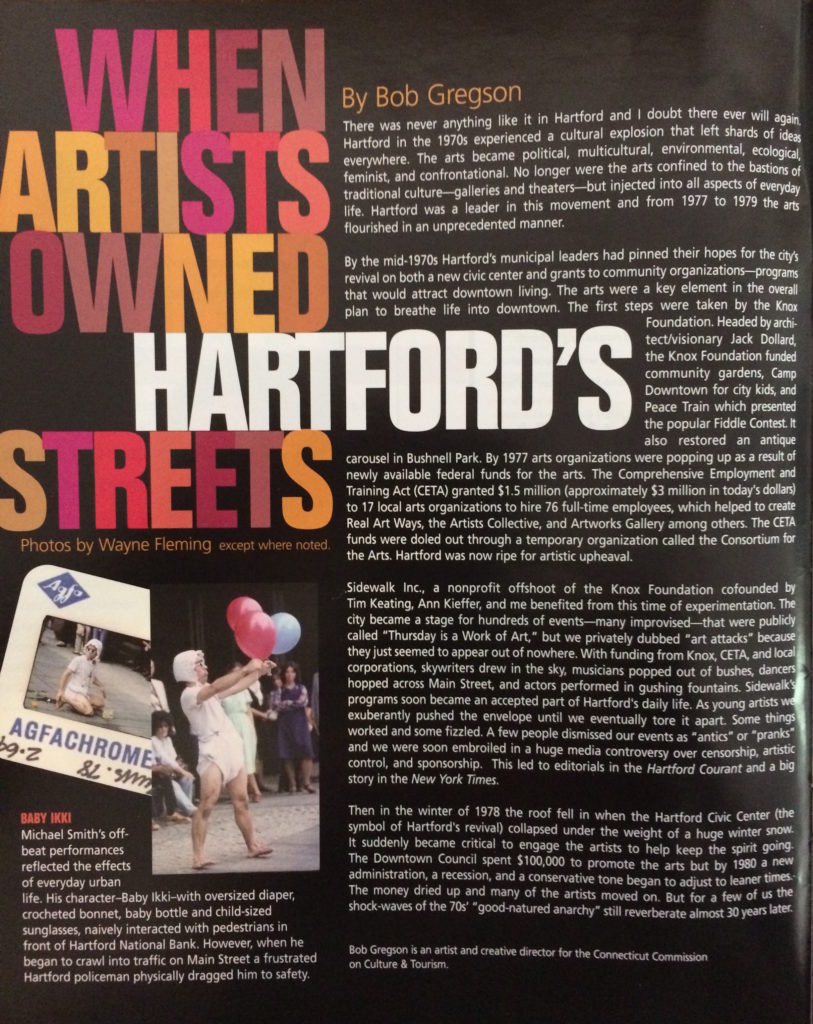 By Bob Gregson. Photos by Wayne Fleming except where noted.
By Bob Gregson. Photos by Wayne Fleming except where noted.
(c) Connecticut Explored, Winter 2004/2005
There was never anything like it in Hartford and I doubt there ever will be again. Hartford in the 1970s experienced a cultural explosion that left shards of ideas everywhere. The arts became political, multicultural, environmental, ecological, feminist, and confrontational. No longer were the arts confined to the bastions of traditional culture — galleries and theaters — but injected into all aspects of everyday life. Hartford was a leader in this movement and from 1977 to 1979 the arts flourished in an unprecedented manner.
SUBSCRIBE!
By the mid-1970s, Hartford’s municipal leaders had pinned their hopes for the city’s revival on both a new civic center and grants to community organizations–programs that would attract downtown living. The arts were a key element in the overall plan to breathe life into downtown. The first steps were taken by the Knox Foundation. Headed by the architect/visionary Jack Dollard, the Knox Foundation funded community gardens, Camp Downtown for city kids, and Peace Train which presented the popular Fiddle Contest. It also restored an antique carousel in Bushnell Park. By 1977 arts organizations were popping up as a result of newly available federal funds for the arts. The Comprehensive Employment and Training Act (CETA) granted $1.5 million (approximately $3 million in 2004 dollars) to 17 local organizations to hire 76 full-time employees, which helped to create Real Art Ways, the Artists Collective, and Artworks Gallery among others. The CETA funds were doled out through a temporary organizations called the Consortium for the Arts. Hartford was now ripe for artistic upheaval. Sidewalk Inc., a nonprofit offshoot of the Knox Foundation cofounded by Tim Keating, Ann Kieffer, and me benefited from this time of experimentation. The city became a stage for hundreds of events — many improvised — that were publicly called “Thursday is a Work of Art,” but we privately dubbed “art attacks” because they just seemed to appear out of nowhere. With funding from Knox, CETA, and local corporations, skywriters drew in the sky, musicians popped out of bushes, dancers hopped across Main Street, and actors performed in gushing fountains. Sidewalk’s program soon became an accepted part of Hartford’s daily life. As young artists we exuberantly pushed the envelope until we eventually tore it apart. Some things worked and some fizzled. A few people dismissed our events as “antics” or “pranks” and we were soon embroiled in a huge media controversy over censorship, artistic control, and sponsorship. This led to editorials in The Hartford Courant and a big story in The New York Times.
Sidewalk Inc., a nonprofit offshoot of the Knox Foundation cofounded by Tim Keating, Ann Kieffer, and me benefited from this time of experimentation. The city became a stage for hundreds of events — many improvised — that were publicly called “Thursday is a Work of Art,” but we privately dubbed “art attacks” because they just seemed to appear out of nowhere. With funding from Knox, CETA, and local corporations, skywriters drew in the sky, musicians popped out of bushes, dancers hopped across Main Street, and actors performed in gushing fountains. Sidewalk’s program soon became an accepted part of Hartford’s daily life. As young artists we exuberantly pushed the envelope until we eventually tore it apart. Some things worked and some fizzled. A few people dismissed our events as “antics” or “pranks” and we were soon embroiled in a huge media controversy over censorship, artistic control, and sponsorship. This led to editorials in The Hartford Courant and a big story in The New York Times.
Then in the winter of 1978 the roof fell in when the Hartford Civic Center (the symbol of Hartford’s revival) collapsed under the weight of a huge winter snow. It suddenly became critical to engage the artist to help keep the spirit going. The Downtown Council spent $100,000 to promote the arts but by 1980 a new administration, a recession, and a conservative tone began to adjust to leaner times. The money dried up and many of the artists moved on. But for a few of us the shock-waves of the 70s’ “good-natured anarchy” still reverberates almost 30 years later.
Bob Gregson is an artist and creative director for the Connecticut Commission on Culture & Tourism.
Baby Ikki
Michael Smith’s off-beat performances reflected the effects of everyday urban life. His character — Baby Ikki — with oversized diaper, crocheted bonnet, baby bottle, and child-sized sunglasses, naively interacted with pedestrians in front of Hartford National Bank. However, when he began to crawl into traffic on Main Street a frustrated Hartford policeman physically dragged him to safety.
Audience Piece
Art students with folding chairs sat in unusual places around downtown prior to meeting up in front of the Hartford Civic Center. They then placed their chairs in a single row and began applauding passersby. A few embarrassed pedestrians crossed the street to avoid being “put on stage” while others, relishing the attention, returned to take bows. One man turned toward the group, pointed directly at them and said disapprovingly,” You people have no sense of reality!” The applause stopped; the “audience” thought about that and then let out an enormous cheer.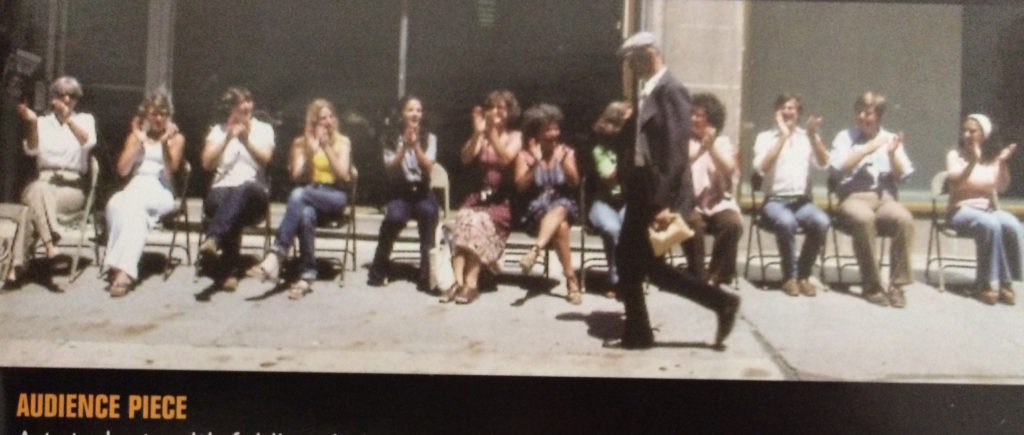
Pigeon Sacrifice
Tim Keating acquiesced to the ubiquitousness of pigeons in Hartford by creating his personal “sacrifice.” Covering himself in Wonderbread, Tim lay motionless on the sidewalk in front of Dunkin’ Donuts waiting to be devoured. The pigeons stayed away, but this witty performance was “eaten up” by pedestrians.
Sidewalk Samba
Hartford became a Hollywood musical when Dawn Whalen and Bob Gregson jumped out of a sound truck and began dancing on the sidewalk to the loud accompaniment of Latin music. Here they are dancing up the stairs of Center Church. A few brave pedestrians joined in and before long it became a full-fledged production number. When the pair had finished, they hopped back in the truck and began again elsewhere.
Marathon Reading of the History of Hartford
(below) Seated in an oversized chair, symbolically placed in front of the Old State House, a team of volunteers read aloud from a book recounting the history of Hartford.
Fountain Service
(below) On-SiteTheaterworks (not to be confused with Hartford’s current TheaterWorks) integrated pieces into unexpected sites such as the “Tragedy of Antigone” with Bill Ewing at the Burr Mall fountain. Probably the most infamous was a piece which the actors — Donna Donnelly, Kevin Rita, Dawn Whalen, and Richard Ploetz — were periodically drenched.
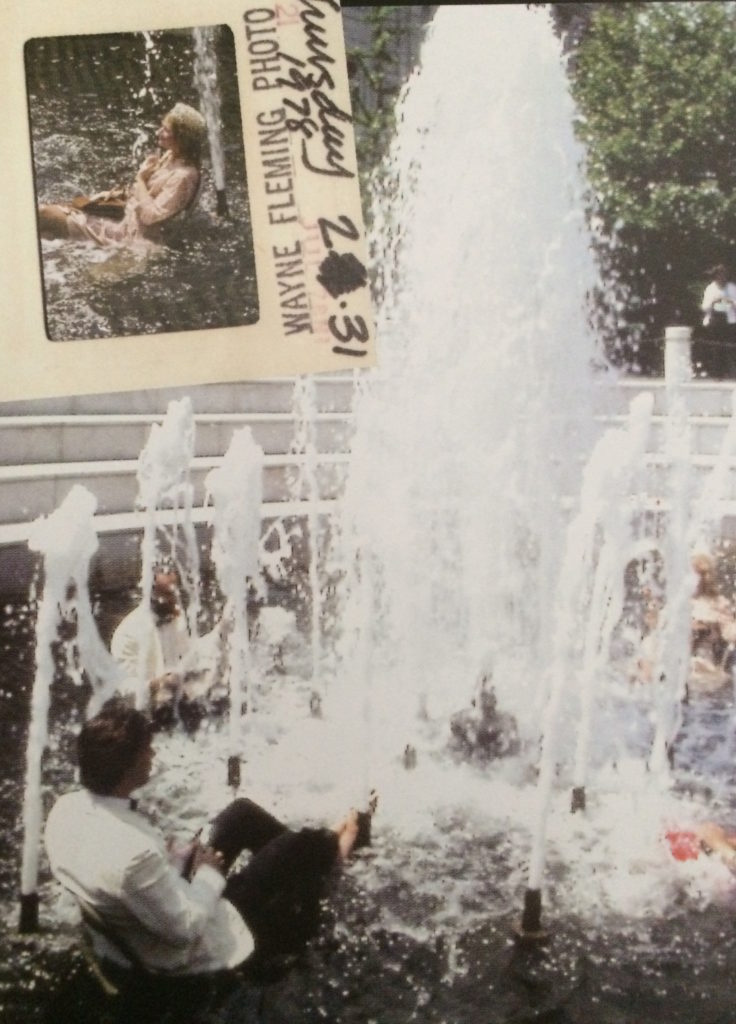
“The Tragedy of Antigone” with Bill Ewing, Donna Donnelly, Kevin Rita, Dawn Whalen, and Richard Ploetz, Burr Mall fountain, Hartford
Wild About Harry
Storyteller Ed Stivender performed outside of the corporate office of United Technologies (the Gold Building) as people gathered to hear his story of UTC chairman Harry Gray — “as told by his brothers Dorian and Zane.” Ed enhanced his performance by wearing “gray-face.”
Curtain Wall
(below) Sculptor Karl Knoecklein constructed large-scale fabric pieces and inflatables that playfully transformed the spaces of downtown and helped to set the stage for other performers. This dramatic tobacco netting curtain billowed over Trumbull Street forming a transparent wall at the end of Pratt Street.

